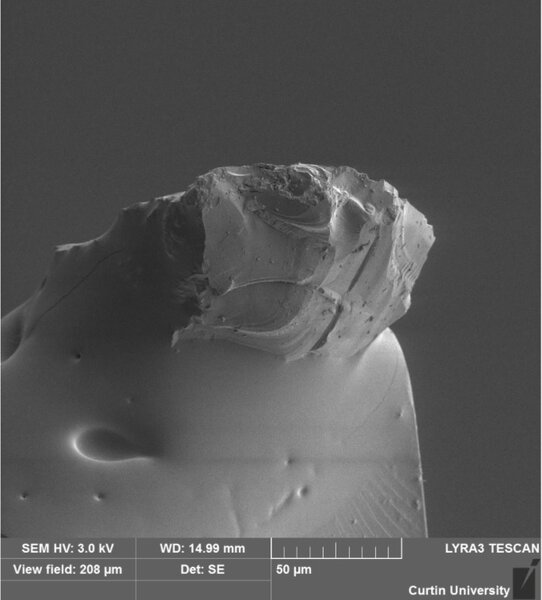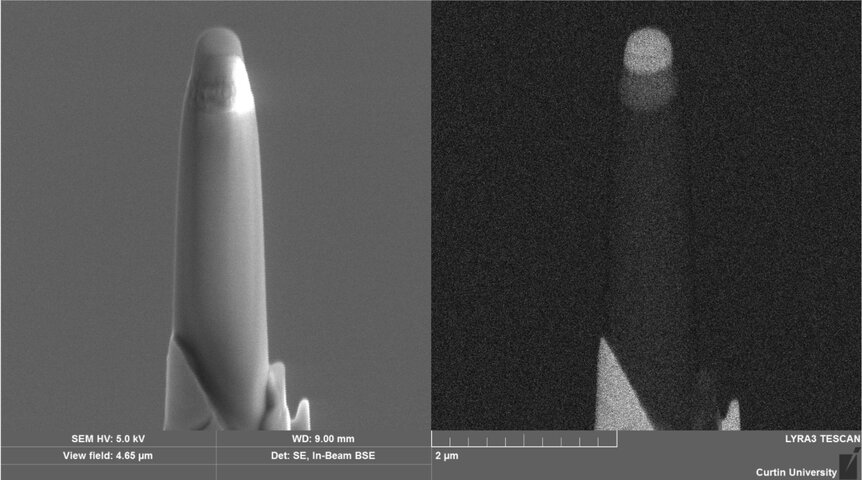Create a free profile to get unlimited access to exclusive videos, sweepstakes, and more!
Space dust created a thirst trap, delivering water from solar winds to Earth
Whether from the tap or an Artesian spring, your water came from the Sun.

There are many qualities about our planet which make it unique among the solar system and probably at least uncommon in the larger universe, not least of these is the abundance of water on the Earth’s surface. Approximately 70% of our planet is covered in liquid oceans which trace their histories back to very early after the planet’s formation.
Nailing down precisely where all that water came from has been a long-standing question among planetary scientists, and one which just received a cosmic shot of new data. It was previously believed that the vast majority of the water on Earth was delivered here by a series of collisions with water-rich asteroids and other objects during the final stages of formation, but their composition didn’t quite line up with what we see here on Earth.
The isotopic fingerprints of known extraterrestrial sources was higher than what we observe in the mantle and on the surface of our planet, suggesting there must have been some other source of water, with a lighter isotopic signature, early on.
A new paper by Luke Daly from the Space Science and Technology Centre, School of Earth and Planetary Science, at Curtin University, and colleagues, may have found the answer coming from an unlikely source: our own Sun. Their results were published in the journal Nature Astronomy.
Daly and colleagues looked at dust grain samples from the Itokawa asteroid using a process new to planetary science and found evidence that a significant portion of Earth’s water may have been manufactured aboard tiny grains of interplanetary dust beaten by the solar winds.
“You could explain Earth’s Ocean composition by about a 50-50 mix of little dust grains that have been affected by the solar winds, producing water in their outer surface, and water-rich asteroids as a sort of late delivery surface for water,” Daly told SYFY WIRE. “You can think about it as there’s almost half a glass of sunshine in every glass of water.”
Those grains, which are already rich in oxygen, floating through space act as small water manufacturing plants when they come into contact with the solar winds. As hydrogen ions from the Sun make contact with grains, they strip away oxygen out of the crystal structure and bind to them making OH, then it’s just a waiting game for another hydrogen ion to make contact and you have water. That process, repeated over a long enough period results in grains carrying a surprisingly high collective water content. A cubic meter of this cosmic soil is estimated to contain at least 20 liters of water.
“That’s typical of Itokawa, if dust grains were smaller, you might get a bit more water,” Daly said. “For Itokawa, the average dust grain is about 100 microns, then you’ve got this outer layer of a couple hundred nanometers that’s water-rich to about 1%. If you melt a cubic meter of that soil, you get 20 liters of water, but those grains are actually quite big compared to the size distribution of grains we think would have been raining down on Earth.”
In terms of cosmic water manufacturing, smaller is better. That relationship might seem counterintuitive but when it comes to surface interactions with the Sun, it’s all about volume to surface area ratio. One large object has lower total surface area than the same amount of material broken up into bits.
Validating the presence of water in the grains involved using atom probe tomography, which allows scientists to take a tiny needle-sized sample of a grain and peer into its smallest structures.
“You put a very fine needle, thousands of times smaller than a human hair, in the atom probe under very high vacuum, apply a little bit of a voltage to it, and then shoot a laser at it. That gives it just enough energy to ionize a single atom. That atom flies away and hits a detector and you can figure out where the atom was in the sample and what element or molecule it is,” Daly said.
The team counted approximately 20-million atoms over the course of about a day, building a 3D atomic level map of the sample. “We’re literally talking about measuring single atoms at a time to figure out what this stuff’s made of,” Daly said.
The team is now looking forward to examining soil samples from other locales to determine if this solar water creation process is as ubiquitous as they believe it to be. They just received an allocation of lunar soil from the Apollo XIV mission and are planning to examine it using the same atom probe tomography; they predict to see the same presence of water there. At the moment, they’re looking at samples returned from the Hayabusa 2 mission, characterizing material brought back from the water-rich asteroid Ryuga.
The presence of water being manufactured on dusty solar winds opens up some possibilities for human space travel, in that water might be even more abundant than we previously supposed.
“The implication of this is every airless world, be it an asteroid or moon or anything, so long as it doesn’t have an atmosphere and close enough to its Sun that it’s receiving relatively strong solar wind — but that could be all the way out to beyond the asteroid belt of our own solar system — any object like that in our whole galaxy will be affected by this process,” Daly said.
What’s particularly exciting about this process as it pertains to human benefit, is that the process is renewable. So long as the soil has oxygen free for the taking, bombardment from the solar winds will continue to make new water.
We really do have the Sun to thank for everything we have. From the food we eat, tracing the food chain back to the photosynthesis of plants, to the water we drink, it’s sunlight all the way down.



























